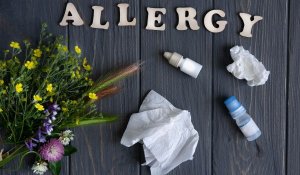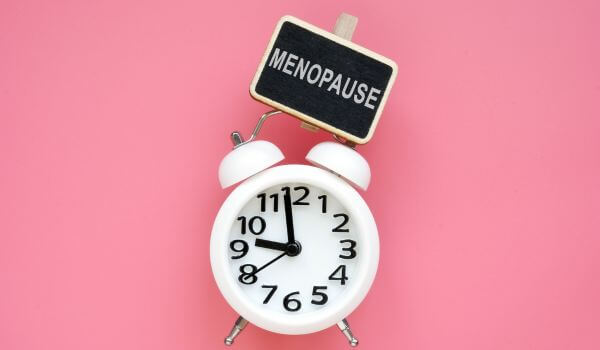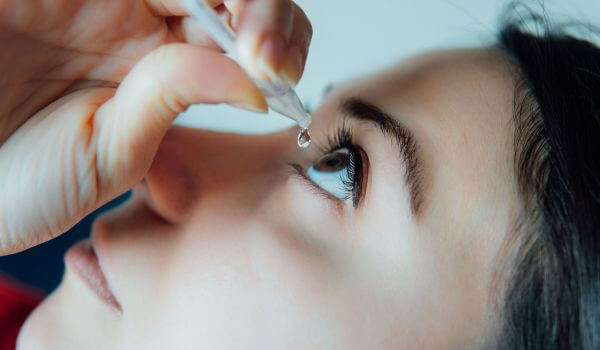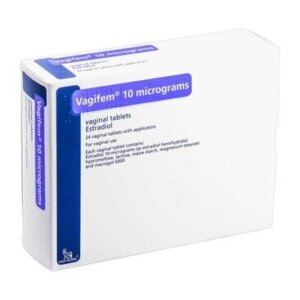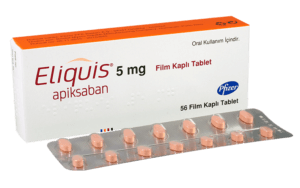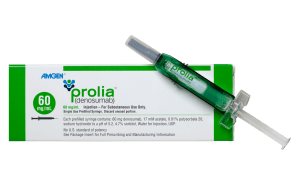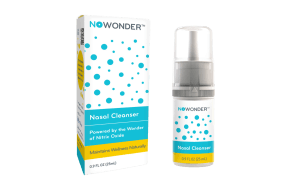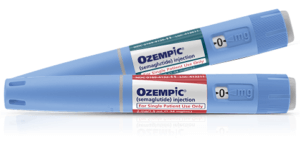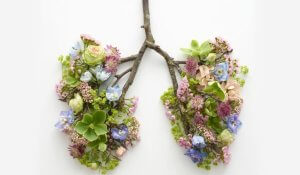 No, you’re not imagining it. Spring is hitting hard this year, and many people are noticing that their seasonal allergies are worse than usual. In my case, the usual Timothy grass allergy started in late February, a full month and a half earlier than I was expecting, and this time, it sent me to the doctors with breathing difficulties rather than just the regular runny nose and itchy eyes. It turns out that seasonal allergies, or hay fever, are lasting longer and affecting more people than ever. The good news is that, with so many effective allergy treatments on the market, seasonal allergy symptoms don’t have to ruin the spring/summer season.
No, you’re not imagining it. Spring is hitting hard this year, and many people are noticing that their seasonal allergies are worse than usual. In my case, the usual Timothy grass allergy started in late February, a full month and a half earlier than I was expecting, and this time, it sent me to the doctors with breathing difficulties rather than just the regular runny nose and itchy eyes. It turns out that seasonal allergies, or hay fever, are lasting longer and affecting more people than ever. The good news is that, with so many effective allergy treatments on the market, seasonal allergy symptoms don’t have to ruin the spring/summer season.
Why are seasonal allergies so bad this year?
The American Lung Association says that changing temperature and rainfall patterns due to climate change across the US have a big effect on pollen allergies. With warmer weather year-round and 2024 being the hottest year on record, the freeze-free season has gotten longer. The ground thaws earlier in spring, allowing trees to release pollen sooner, and since the ground freezes later in fall, the pollen season stretches further into the year. This means people are dealing with hay fever for a longer time. Pollen season in the US is now about three weeks longer than it was 50 years ago. The amount of pollen produced is also up, with plants producing up to 20% more pollen than 50 years ago, and increasing allergy severity.
Which cities are the worst for seasonal allergies?
The Asthma and Allergy Foundation of America (AAFA) has shared its yearly allergy report, listing the toughest cities for people with seasonal allergies. The report looks at things like pollen levels from trees, grass, and weeds, how much allergy medicine is being used, and how easy it is to find allergy specialists. For the third year in a row, Wichita, Kansas, was ranked as the worst city for hay fever. This is mainly because it has higher-than-normal pollen levels from trees and grass.
Top 10 seasonal allergy capitals
- Wichita, Kansas
- New Orleans, Louisiana
- Oklahoma City, Oklahoma
- Tulsa, Oklahoma
- Memphis, Tennessee
- Little Rock, Arkansas
- Raleigh, North Carolina
- Richmond, Virginia
- Greenville, South Carolina
- Greensboro, North Carolina
What causes seasonal allergies?
Seasonal allergies occur when pollen from trees, grasses, or weeds gets into the air and allergy sufferers are exposed to it. The immune system mistakenly identifies this harmless pollen as a threat. In response, the body releases chemicals like histamine to fight off the perceived invader. This reaction triggers allergy symptoms. These symptoms can vary from person to person, depending on what they’re allergic to, their location, and daily routines. Common signs include sneezing, a runny nose, itchy eyes, a sore or scratchy throat, and sinus pressure. These symptoms are part of the body’s effort to expel the allergen, but they can leave people feeling uncomfortable during high pollen seasons.
In the spring, trees like birch, oak, cedar, and maple release their pollen, which is the main cause of early seasonal allergies. During the summer, grass pollen from plants like Bermuda and Kentucky bluegrass takes over. By fall, weed pollen becomes the biggest trigger.
Which times of the year bring the most seasonal allergies?
Seasonal allergies are most common during the months when plants release pollen for propagation. While it’s hard to say exactly when allergies are at their worst, most people tend to experience them between March and September. This is when many plants are pollinating.
The type of allergy someone experiences depends on the kind of pollen they’re allergic to. Pollen season varies across the country because it depends on the plants that grow in each area. In the northern United States, the three main types of pollen people deal with are tree pollen, grass pollen, and weed pollen.
People who are allergic to tree pollen usually deal with symptoms in March and April. Those allergic to grass pollen feel it most from late May to July. Ragweed pollen causes issues in August and September.
How can I avoid seasonal allergies?
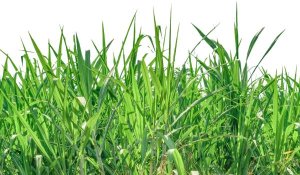
Corticosteroids
Corticosteroids act within cells to decrease the release of inflammatory substances, reducing swelling, redness, and irritation after being triggered by pollen and other irritants. They are produced naturally by the adrenal glands, but normal levels may be insufficient when the nasal passages are overwhelmed by asthma triggers. Prednisone is an oral version, and Veramist, Qnasal, Rhinocort, Beconase, or Nasonex.
Antihistamines
Antihistamines act by blocking histamine receptors, thereby preventing typical allergic responses such as itching and sneezing. Oral antihistamines, available as liquids or pills, can quickly ease seasonal allergy symptoms. Options like Zyrtec, Claritin, Ebastine, and Allegra are popular because they are less likely to cause drowsiness because they don’t cross the blood-brain barrier as readily. They typically start working in about 30 minutes and last up to 24 hours.
Nasal sprays
Many people with allergies rely on oral antihistamines, but nasal sprays may actually be better for some people for daily use. Steroid nasal sprays like Flonase and Astelin help by reducing swelling in the nose, which makes it easier to breathe.
Eye drops
Eye drops can be a great solution for itchy, watery eyes caused by allergies. Drops such as Patanol work by stopping the release of histamine, which is what makes eyes irritated. Using natural tears or applying a warm compress can also help soothe the discomfort.
Combinations
Because reactions to pollen and other irritants differ from person to person, often a single course of treatment may be insufficient. This is when combinations of medications that address different aspects of the allergic reaction can be useful. For example, Singulair is neither a steroid nor an antihistamine. It is a leukotriene receptor antagonist that is often prescribed together with a steroid or antihistamine to treat asthma and allergic rhinitis. It’s especially useful since it can treat very young children, from 6 months of age and up.
Dymista and Ryaltris are both combinations of an antihistamine and a corticosteroid. Clarinase contains an antihistamine and a decongestant. They are used to treat multiple symptoms of allergies, such as a runny or stuffy nose, sneezing, and itchy and watery eyes.
Immunotherapy
If regular allergy medicine doesn’t work, allergy shots might be an option. Drugs like Xolair, a form of immunotherapy, aren’t usually recommended for kids under five, but older children and teens with severe, persistent asthma could benefit. Another option is sublingual immunotherapy (SLIT), also known as allergy drops or allergy tablets, which is a method of treating allergies by gradually exposing the body to allergens under the tongue so as to build tolerance to specific allergens and reduce allergic reactions over time.
Environmental prevention
Reducing exposure to pollen in one’s environment can also help reduce allergy symptoms. This means keeping windows closed, showering after spending time outside, and not wearing outdoor clothes to bed. Pets can carry pollen indoors, too, so giving them regular baths can help. Simple steps, such as wearing a mask if going outdoors when it’s windy, can also help.
Rescue medication
Sometimes, the first onset of an allergic reaction can be so severe that it completely blocks the airways (anaphylaxis). This is more common with bee or wasp stings or snake bites, but can also happen with food, drugs, or pollen. People who have experienced this before, or shown a high sensitivity to some irritants, are encouraged to keep rescue medication such as an Epipen with them whenever there is danger of exposure to their trigger, such as going outdoors in the early days of the seasonal release of pollen to which they have shown extreme sensitivity in the past.
Can you treat allergies naturally?
It is possible to treat allergies naturally, though it does take some time and consistent use of natural preventative allergy supplements rather than symptom relief medication. Supplements containing ingredients like quercetin and other anti-inflammatory ingredients can help strengthen the immune system and reduce allergy symptoms, but they are best taken daily starting at least a month before allergy season. This Allergy pack is a great example that has been designed to support hay fever relief with powerful nutrients. It contains quercetin, a plant-based flavonoid with antioxidant and anti-inflammatory benefits, and NAC, which promotes respiratory health and detoxification. Vitamin C strengthens immunity, while omega-3 fatty acids reduce inflammation. A blend of vitamins A, D, E, and K supports immune defense, respiratory health, and mucosal integrity.
Other natural remedies include using a Neti pot to flush out the sinuses, taking probiotics to improve gut health, and using essential oils in a diffuser or topically for relief.
FAQs
How to tell if it’s allergies or a cold?
Even though cold and allergy symptoms can feel alike, there are some key differences to watch for. Colds often come with a fever, while seasonal allergies usually don’t. Allergies can cause a runny nose, sore throat, and coughing, just like a cold, but without the fever.
Colds usually clear up in 5 to 7 days, with the worst symptoms fading after 2-3 days. Allergies, on the other hand, can stick around for weeks or even months.
If your symptoms show up around the same time every year, it’s likely allergies caused by the change in seasons. Colds and the flu don’t follow a yearly pattern and are harder to predict.
Can allergies make you feel sick?
Seasonal allergies don’t just cause sinus issues; they can also lead to inflammation in the gut, airways, and skin. Certain foods can also worsen inflammation during allergy season. This can add to minor reactions with pollen exposure, increasing symptoms. Histamine release in the body may cause gas, bloating, nausea, stomach pain, and diarrhea.
What time of day are seasonal allergies the worst?
Pollen levels typically increase in the morning and peak around midday or early afternoon. Allergies tend to be most severe during this time due to the high amount of pollen in the air.
What does allergy fatigue feel like?
Feeling tired is a common symptom of allergies. This happens for a few reasons, like trouble sleeping because of allergy symptoms or side effects from allergy medicine. Allergy fatigue can also cause issues like brain fog and sleep problems. Unlike regular tiredness, allergy fatigue doesn’t go away after a good night’s sleep. People with it often feel exhausted all day, no matter how much rest they get.
What vitamin deficiency can cause allergies?
Allergic conditions like asthma, eczema, food allergies, and anaphylaxis have become more common in recent years. One possible reason is vitamin D deficiency. Vitamin D helps activate immune cells that reduce allergic reactions, so a deficiency might make allergies worse. While allergies involve both genetics and environment, vitamin D may play a role.

